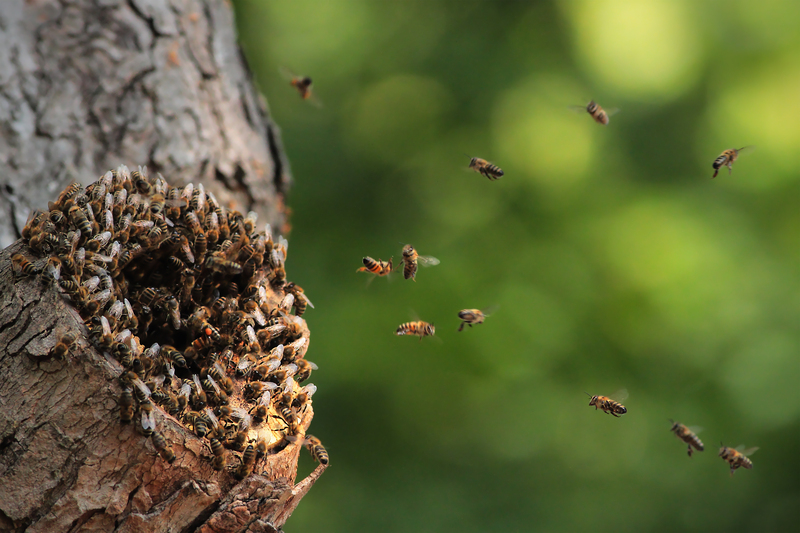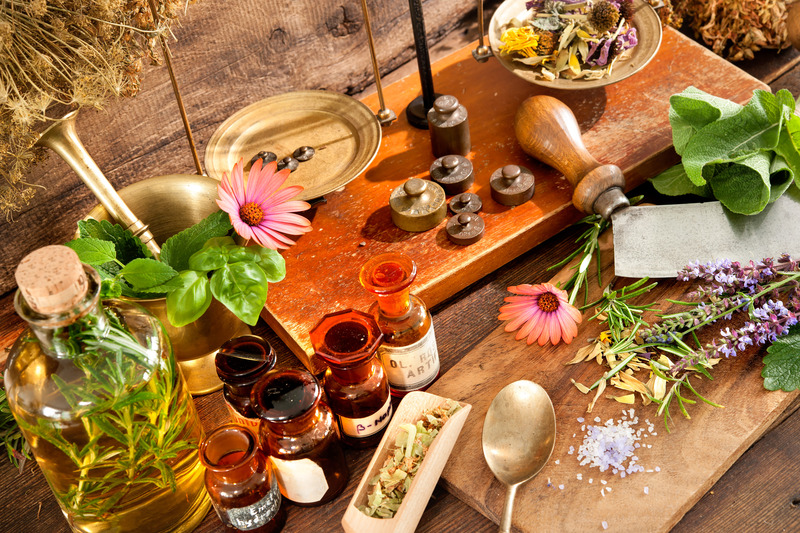Creating a Garden Haven: Enjoy Pet-Friendly Gardening Adventures
Posted on 31/05/2025
Creating a Garden Haven: Enjoy Pet-Friendly Gardening Adventures
Gardening is a rewarding, calming experience that connects us with nature and beautifies our homes. For those with furry friends, crafting a pet-friendly garden haven brings double the joy--a space where humans thrive amid plants and pets can safely wander, play, and rest. But designing a garden that's both a captivating retreat and a haven for pets requires thoughtful planning, the right plant choices, and some creative landscaping.
This comprehensive guide explores how to create a vibrant, safe garden sanctuary for pets and humans alike. We'll uncover the best plants, pet-proof features, ways to deter common hazards, and inspiring ideas for shared outdoor adventures. Whether you're a dog lover, a cat enthusiast, or have rabbits, tortoises, or other critters, discover how you can enjoy pet-friendly gardening adventures and foster a thriving ecosystem for all.
Why Create a Pet-Friendly Garden?
A pet-friendly gardening space goes beyond aesthetics: it provides a safe, stimulating environment for pets to exercise, explore nature, and reduce stress. Meanwhile, owners enjoy beautiful blooms and lush greenery without worrying about their companions getting hurt or damaging prized plants.
- Enhances Pet Health: Fresh air and natural surfaces support physical activity and minimize anxiety or boredom in pets.
- Safety First: Avoid dangerous plants, sharp tools, and toxic substances to keep your animals protected.
- Encourages Bonding: Gardening together or watching your pets frolic amid greenery is heartwarming and fun.
- Wildlife Friendly: Many pet-safe gardens also welcome butterflies, bees, and birds, enriching biodiversity.
- Easy Maintenance: Smart layout and resilient plants save time and money while surviving playful pets' antics.

Preparation: Essential Steps to Pet-Safe Gardening
Assess Your Pets' Needs
Every species, breed, or individual animal may have different habits and preferences. Begin by observing your pets:
- Do dogs like to dig or run?
- Are your cats skilled climbers or sunbathers?
- Do rabbits nibble constantly?
- Are you raising a tortoise or guinea pig that needs shelter?
Understanding your pets' natural behaviors helps you design zones that protect both plants and animals.
Map Out the Garden Space
Sketch out garden areas for various uses:
- Play zones--open lawns, running tracks, sand/dirt patches for digging, or cat climbing structures.
- Quiet corners--shaded spots, cozy nooks, or pet shelters.
- Pathways--wide, smooth paths for safe, easy exploration.
- Pet-free beds--raised planters or fenced areas for sensitive or toxic plants.
Careful planning ensures everyone has space to enjoy the outdoors together.
Pet-Safe Plants: Blooms, Greens, and Herbs to Choose
The Importance of Non-Toxic Plant Choices
Many beautiful garden plants can be hazardous to animals if nibbled, chewed, or brushed against. Avoiding toxic species is essential for creating a secure garden for pets--particularly curious puppies, kittens, or other foragers.
Below is a list of top non-toxic garden plants that thrive outdoors and are safe for most dogs, cats, rabbits, and other common mammals.
- Sunflowers (Helianthus annuus): Cheerful and non-toxic, sunflowers add height and attract pollinators.
- Marigolds (Tagetes spp.): Hardy, easy to grow, and safe for pets, marigolds deter pests too.
- Snapdragons (Antirrhinum majus): Bright and lively, these can grow in various climates--perfect for pet-safe flower beds.
- Spider Plants (Chlorophytum comosum): Excellent for pots or hanging baskets; safe around cats and dogs.
- Camellia: Luxurious evergreen shrubs with stunning blooms, non-toxic for both cats and dogs.
- Herbs--Rosemary, Thyme, Basil, Sage, Cilantro: Most culinary herbs are pet-safe and add fragrance plus flavor for kitchens.
- Lawn Grasses--Buffalo, Bermuda, Tall Fescue: Many common turf grasses are suitable for pet romps and lounging.
- Bamboo: Non-toxic for pets and makes a wonderful privacy screen or shade area.
Plants to Avoid for Pet-Friendly Landscape Design
Some common garden favorites are toxic if ingested or cause skin irritation. Never plant these in accessible areas:
- Lilies (highly toxic to cats)
- Azaleas and Rhododendrons
- Oleander
- Daffodils and Tulips (bulbs)
- Foxglove
- Sago Palm
- Yew
- Hydrangea
When in doubt, always check the ASPCA's or RSPCA's database of toxic and non-toxic plants for specific species and pet safety.
Functional Features for Your Pet-Approved Garden
Secure Fencing and Barriers
If you want your garden haven for pets to remain secure and enticing, sturdy fencing is crucial. Consider pet-specific options based on your animal's size and agility:
- For dogs: Four to six-foot solid fences to prevent escape, or dig barriers below ground for avid diggers.
- For cats: "Catios" (enclosed patios), netting over fences, or cat-proof angled tops.
- For rabbits or guinea pigs: Chicken wire runs, raised beds, or protected tunnels.
Well-placed garden gates and barriers also keep pets away from delicate beds or compost heaps.
Pathways and Play Areas
Creatively designed routes and play zones enhance enrichment and exercise. Here are some ideas for pet-friendly gardening adventures:
- Gravel, mulch, or grass paths that loop through the garden for exploration.
- Dog agility features--tunnels, ramps, or low platforms.
- Cat towers or "jungle gyms" made from recycled wood or sturdy branches for climbing.
- Shallow sand pits or areas where dogs can dig freely without uprooting your prized plants.
- Water features, like a splash fountain or birdbath, for play and hydration (be sure water is shallow and changed often).
Shady Retreats and Cooling Spots
Both plants and pets appreciate relief from hot sun. Incorporate:
- Trees or tall shrubs for natural shade.
- Pet arbors--small pergolas or covered benches where pets and people can sit together.
- Cool tiles, stone beds, or outdoor pet mats for animals to sprawl during summer.
Safe Gardening Practices for Harm-Free Fun
Avoid Toxic Chemicals
Synthetic pesticides, herbicides, and some fertilizers can be fatal to pets if licked off paws or eaten from the soil.
- Opt for organic gardening methods and natural pest control, such as neem oil, diatomaceous earth, or companion planting.
- Store fertilizers, sharp tools, and plant food out of reach in locked cabinets or sheds.
Composting with Care
Compost piles attract curious noses and can contain moldy, decomposing food that's harmful to pets.
- Use sealed compost bins.
- Never add toxic food waste (like coffee grounds, onion, or chocolate).
- Regularly turn and monitor compost heaps if accessible to your animals.
Pet-Proofing Ponds, Pools, and Water Bowls
Uncovered ponds or chemical-laden pools are risky for thirsty pets. For a truly pet-friendly outdoor garden:
- Install safety nets or shallow "pet-friendly" designs for ponds.
- Keep pools covered when not in use.
- Refresh outdoor water bowls daily and place them in shady spots.
Enrichment Ideas: Making Your Garden an Animal Paradise
For Dogs
- Plant pet-safe grasses and clover for lounging.
- Add agility obstacles: tunnels, tires, and step-stones.
- Include a digging pit or sand area (bury treats, chews, or toys for discovery).
- Practice garden scent games--hide pet-safe herbs or favorite scents for mental stimulation.
For Cats
- Build a secure "catio" or catwalks around fences and walls.
- Grow cat grass (oat/wheat/barley) and catnip patches for nibbling.
- Provide vertical space--trees, ledges, or shelves--for sunbathing and watchful observation.
- Add outdoor litter trays in discreet corners if your cats stay outside for extended periods.
For Rabbits, Guinea Pigs, and Tortoises
- Fenced green runs with burrow-friendly soil.
- Plenty of safe grass, dandelion (non-toxic), and herb patches to graze.
- Log piles, tunnels, and low shrubbery for shelter and fun.
- Shaded resting boxes and shallow water trays for hydration and cooling.
Pet Garden Maintenance and Seasonal Tips
Year-Round Pet-Safe Landscape Upkeep
- Inspect fences, gates, and barriers regularly for gaps or damage.
- Remove spent flowers, dead foliage, and any fungi that could be harmful if eaten.
- Monitor for signs of digging or tunneling and guide pets gently to designated play areas.
- Clean water bowls and pet shelters often--watch for algae or insect infestations.
Adapting the Garden for the Seasons
- In summer: Provide extra shade, always have fresh water available, and check concrete or tiles for heat.
- In winter: Use straw or pet-safe bedding in outside shelters, clear ice/snow from paths, and watch for toxic antifreeze leaks.
- During planting seasons: Temporarily fence off new beds until plants are established and less attractive to exuberant paws.
- Keep an eye out for slugs, snails, or berries that pets may accidentally consume in rainy months.

Involving the Whole Family: Gardening as a Pet-Friendly Adventure
Gardening is a wonderful hobby for all ages and a chance to involve the whole family, pets included! Here are ways to make gardening a shared, enriching adventure:
- Let kids help plant pet-safe flowers and design animal play zones.
- Teach children about plant toxicity and caring for pets outdoors.
- Bond with your pets by introducing new mulch paths, practicing agility runs, or simply relaxing together in your haven.
- Host "garden pet days"--invite friends and their pets for safe, fun gatherings amid your greenery.
Remember: a truly pet-friendly garden is an evolving space. As your plants mature and your animals grow, adapt features to suit new needs and interests. The garden is never static, but always a thriving, living haven for adventure!
Conclusion: Start Your Pet-Friendly Gardening Journey Today
Transforming your outdoor space into a garden haven for pets is a deeply rewarding project for animal lovers. By choosing non-toxic plants, adding secure features, embracing sustainable care, and considering both humans' and animals' needs, you create a setting where everyone can bloom.
Get inspired by the power of nature, the curiosity of your pets, and the endless possibilities of outdoor life. Whether you've got a balcony, courtyard, or rolling lawn, it's never too early to start crafting your pet-friendly gardening adventure!
Happy gardening--for every member of the family!

